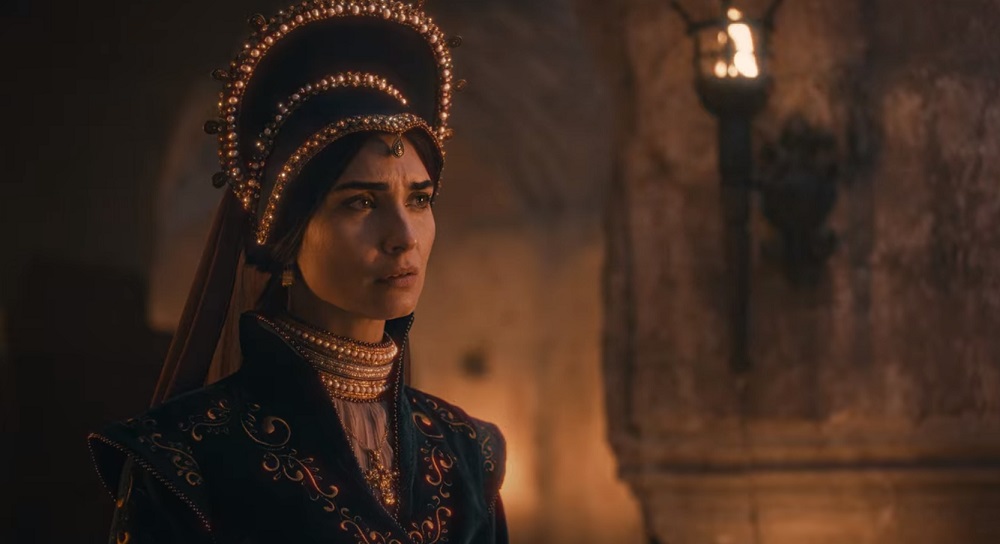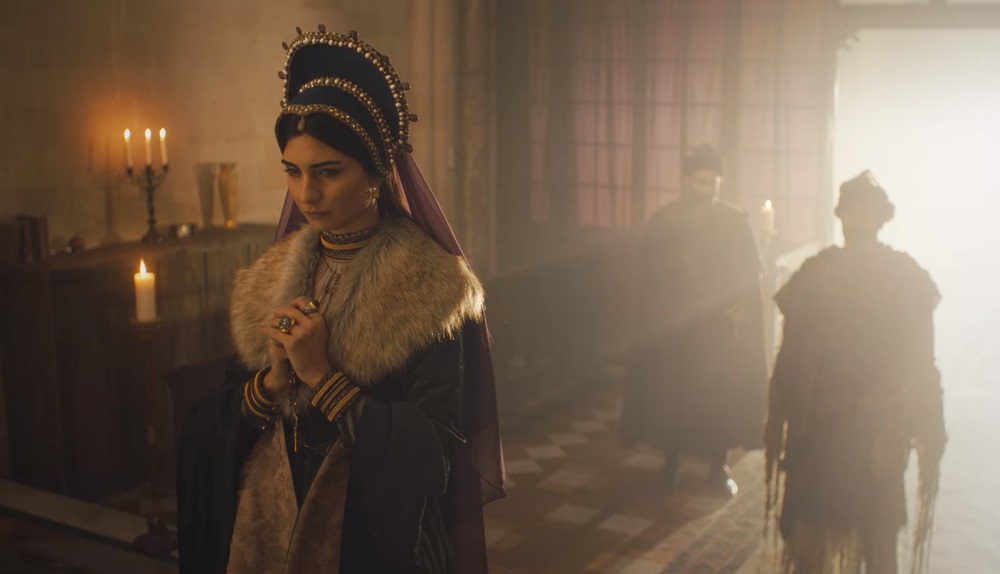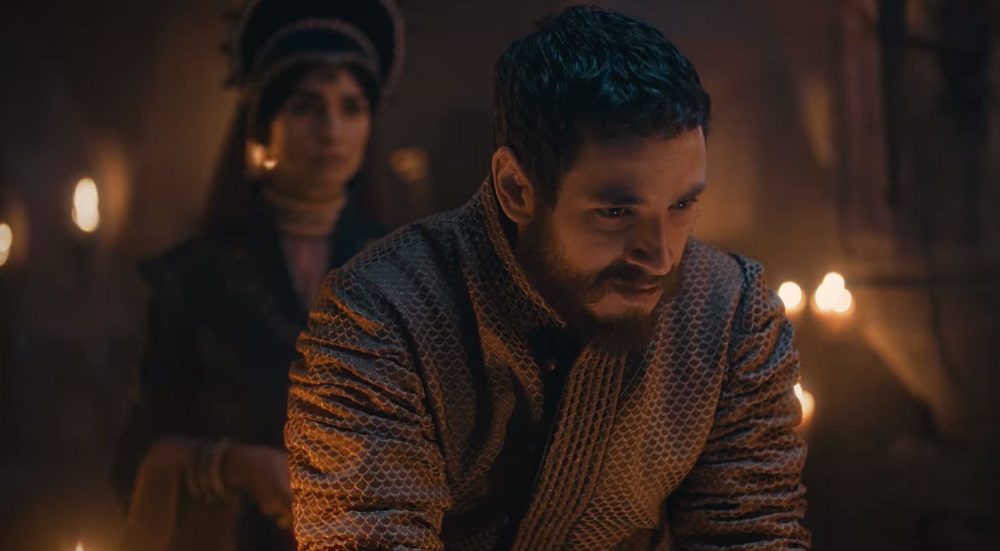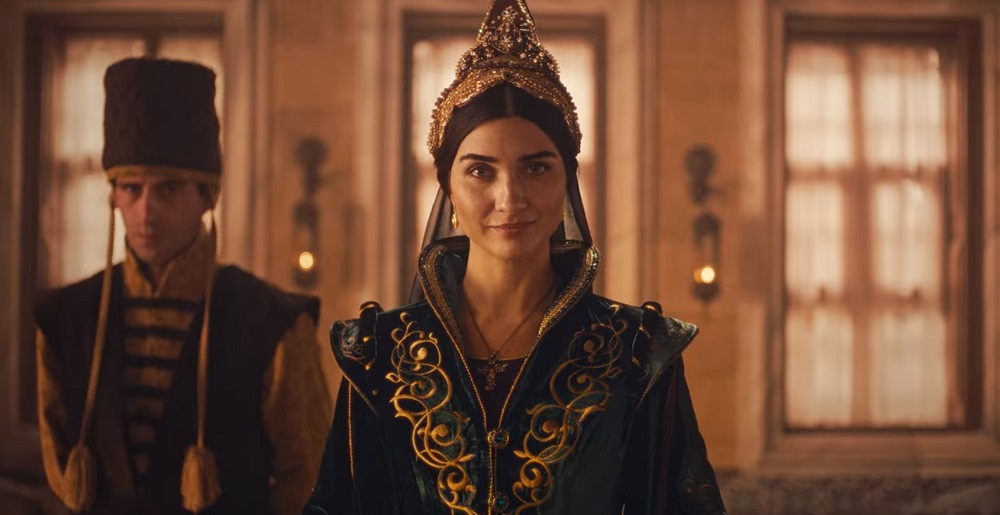In Netflix’s ‘Rise of Empires: Ottoman,’ viewers are introduced to some of the most notable political figures in 15th-century Europe as the Ottoman Empire started to spread its domain and became a power to be respected. Among these important people was none other than Mara Branković, whose journey as a female member of the royal family was far from simple. However, it did leave her in a position of power that not many women have enjoyed. Though she was married to the father of Sultan Mehmed II, her influence in the court during the latter’s reign remains an interesting one. Her relationship with Mehmed is also quite maternal in nature, making many people wonder if the two are actually related. Well, we are here to explore the same and find the answers you need!
Born into Nobility: Mara’s Early Life and Family Lineage
In the year 1416, Mara Branković was born in Vučitrn, which is now known as Vushtrri and located in Kosovo. As a daughter of Đurađ Branković and Eirene Kantakouzene, Mara was part of the ruling family of Serbia and had many siblings, including Grgur Branković. As the heads of a predominantly Christian state, the Branković were avid followers of the church. However, as Mara grew older, her homeland saw constant attacks from the nearby Ottoman Empire under the leadership of Murad II.

In order to smoothen the relationship between Serbia and Ottoman Empire, Murad II was betrothed to Mara in June 1431. According to the Netflix show, Mara had to leave her home behind at the age of 17 and joined the Ottoman court as the future wife of Sultan Murad II. The two were married on September 4, 1435, and the Serbian included the districts of Dubočica and Toplica as a part of Mara’s dowry. It is widely believed that Murad’s new husband “did not sleep” with him.
Despite the marriage pact, the relations between Serbia and the Ottomans worsened. In 1439, Mara’s oldest brother, Grgur, was appointed by Murad as the governor of the southern Serbian territories under the jurisdiction of the House of Branković. However, in April 1441, Grgur was accused of plotting against Murad II and was blinded as a punishment for his crimes. However, Đurađ still remained the Despot of Serbia.

It was with the death of Murad II in 1951 that the marriage came to an end. At the time of her husband’s death, Mara was believed to be traveling to Serbia. Following her widowhood, she was apparently proposed to by Constantine XI, the Emperor of Byzantine, though Mara declined the offer. This likely happened between the 1953 fall of Constantinopole at the hands of Mehmed II. Following the assimilation of the Byzantine capital into the Ottoman Empire and the death of her parents, Mara returned to the Ottoman court sometime in 1956-1957.
The Truth About Mara’s Role
As it turns out, Mara Branković was not the biological mother of Sultan Mehmed II. In fact, there seem to be no records that Mara had any children. However, through her marriage to Murad II, Mara was lawfully Mehmed’s stepmother. Mehmed himself was born to Hüma Hatun, the fourth wife of Murad. Unlike what many might expect, Mara was not shunned by Mehmed and was instead considered a crucial advisor by the Ottoman monarch.

It is believed that Mara held her court at an estate in Ježevo, a place she was offered following her return to the Ottoman court. Despite being married to a Muslim royal family, Mara remained an Orthodox Christian. Her position as a woman of faith and a member of the European nobility made her a person of importance at the time. The fact that she had Mehmed’s favor only served to increase her power. In fact, the Conqueror of Constantinople even sent her on diplomatic missions, including to Matthias Corvinus, as seen in the Netflix show.
Thanks to her influence, she held much say over the leadership of the Orthodox Church and was able to provide special privileges to the Greek Orthodox in Jerusalem. Even after Mehmed died in 1981, Mara’s position did not wane, and she retained much of her power in the court of Bayezid II, the successor of Mehmed.


You must be logged in to post a comment.